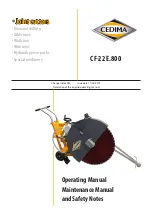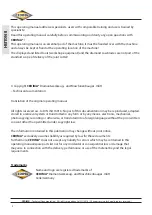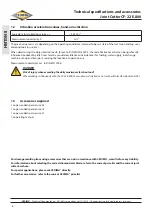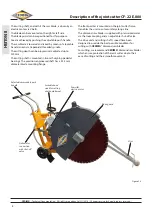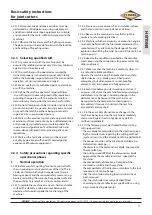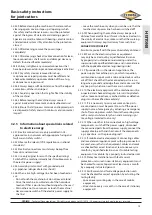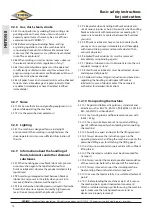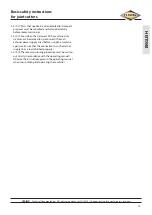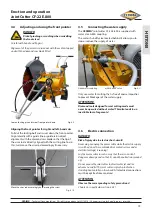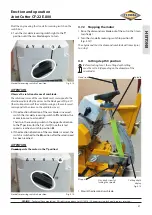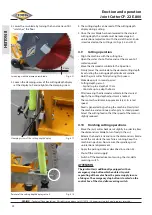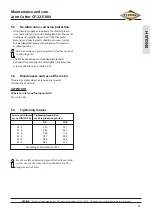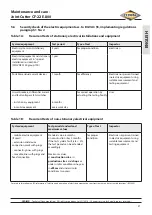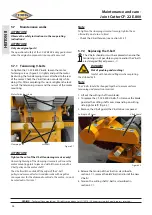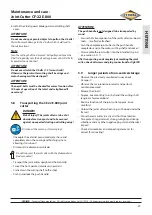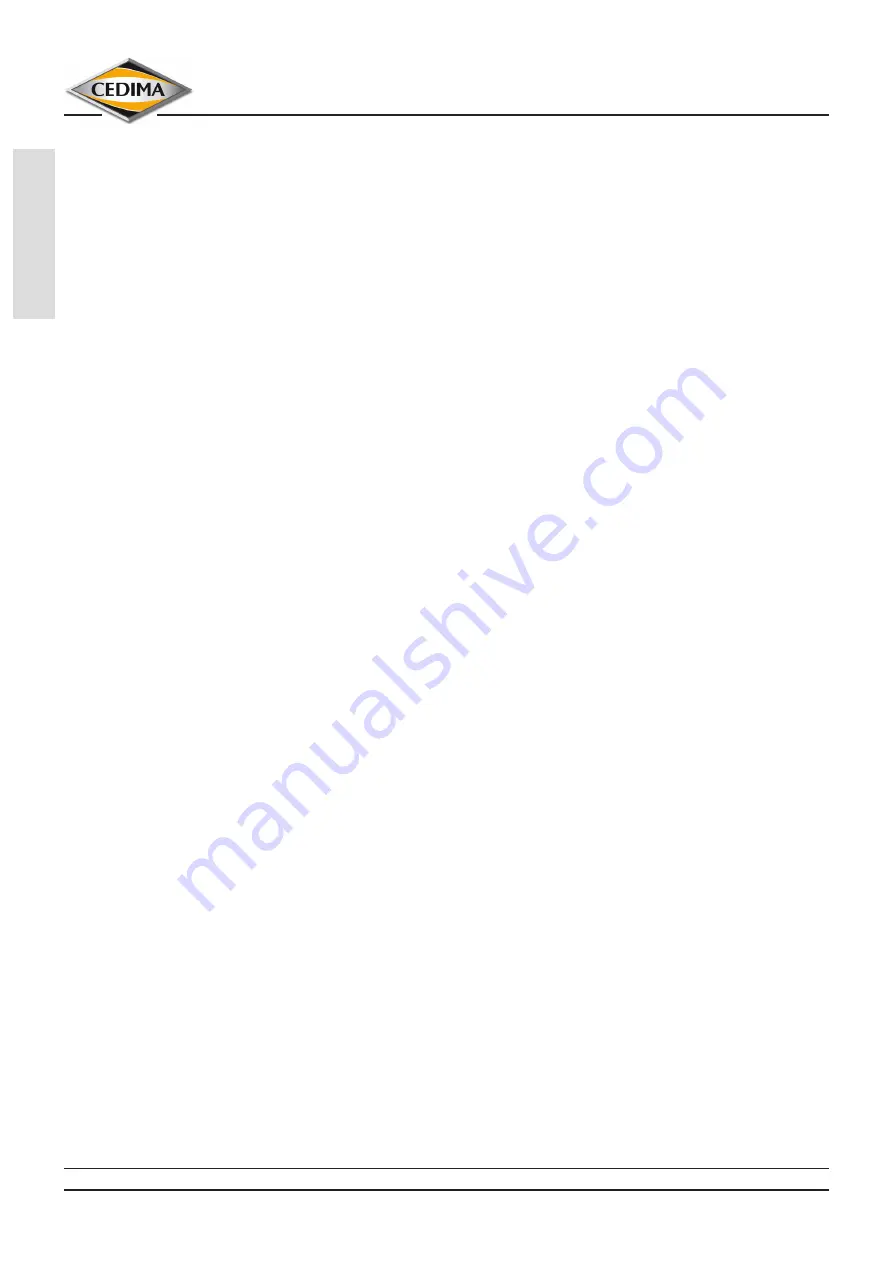
ENGLISH
14
•
CEDIMA
® • Technical Documentation • All rights reserved acc. to ISO 16016 • Changes serving technical progress reserved •
Basic safety instructions
for joint cutters
3.2.6 Gas, dust, steam, smoke
3.2.6.1 Do not perform any welding, flame-cutting and
grinding work on the machine unless such work is
expressly permitted, as there may be a risk of fire or
explosion (consult CEDIMA®)!
3.2.6.2 Before carrying out welding, flame-cutting
or grinding operations, clean the machine and its
surroundings from dust and flammable material and
make sure that the premises are sufficiently ventilated
(risk of fire or explosion)!
3.2.6.3 When working in small or narrow rooms, observe
the relevant national safety regulations (if any)!
3.2.6.4 Internal combustion engines must be operated
in sufficiently ventilated rooms only! Never leave the
engine running in enclosed or confined spaces! Exhaust
gases contain carbon monoxide!
3.2.6.5 All pipes, hoses and screwed joints must be checked
for leaks and visible damage at regular intervals! Clear
any defect immediately or have the defect rectified
immediately!
3.2.7 Noise
3.2.7.1 Make sure that all sound-proofing equipment is in
place while operating the machine!
3.2.7.2 Use the prescribed ear protectors!
3.2.8 Lighting
3.2.8.1 The machine is designed for use in daylight
environments! When working in unlighted areas the
driver/operator must ensure sufficient illumination of
the site.
3.2.9 Information about the handling of
fluids, lubricants and other chemical
substances
3.2.9.1 When handling pressure fluids, lubricants, greases
or conservation agents (hereinafter referred to as
fluids or lubricants), observe the product-related safety
regulations!
3.2.9.2 Avoid any prolonged contact between fluids or
lubricants and your skin! Carefully clean your skin to
remove all fluids or lubricants adhering to it!
3.2.9.3 Be careful when handling pressure liquids (hydraulic
fluids)! Risk of serious injuries caused by high pressure
leaks! Do not manipulate the hydraulic system!
3.2.9.4 Be careful when handling hot fluids or lubricants;
risk of serious injuries or burns! Especially when handling
fluids or lubricants with temperatures exceeding 60 °C
make sure to avoid any contact between the fluid and
your skin!
3.2.9.5 If fluids or lubricants have come into contact with
your eyes, rinse your eyes immediately and thoroughly
with clean drinking water and consult a doctor! Then
consult a physician!
3.2.9.6 Spilled fluids or lubricants must be removed
immediately using binding agents!
3.2.9.7 Fluids or lubricants must not penetrate into the soil
or public sewage system!
3.2.9.8 Used fluids or lubricants must be collected, stored
and disposed of properly!
3.2.9.9 Follow all relevant legal instructions and provisions
regarding the handling and disposal of fluids or
lubricants! In case of doubt, contact the competent
authorities for detailed information!
3.2.10 Transporting the machine
3.2.10.1 Regard and follow all regulations, standards and
directives such as BGV A1, BGI 523, 90/269/EEC, 2001/45/
EEC, ArbStätt V, Lasthandhab V!
3.2.10.2 Use hoisting tools and floor-level conveyors with
loads > 25 kg
3.2.10.3 Use only suitable means of transport and lifting
gear of sufficient capacity when loading or transporting
the machine!
3.2.10.4 Specify an expert instructor for the lifting process!
3.2.10.5 Always observe the instructions given in the
operating manual when lifting the machine (use only the
prescribed lifting eyes for attaching the lifting gear)!
3.2.10.6 Only use a suitable transport vehicle with sufficient
lifting force!
3.2.10.7 The diamond saw blade must be dismounted for
transport!
3.2.10.8 Always control the accident-proof accommodation
of the accessories before the transport of the machine!
3.2.10.9 Always store or transport the standing machine
horizontally, otherwise fuel and oil can leak out!
3.2.10.10 Secure the load carefully. Use suitable attachment
points!
3.2.10.11 Before loading the machine or parts of it, secure
the machine/parts against inadvertent movement!
Attach a suitable warning sign! Before using the machine
again, make sure that such protection material or
devices are properly removed!

